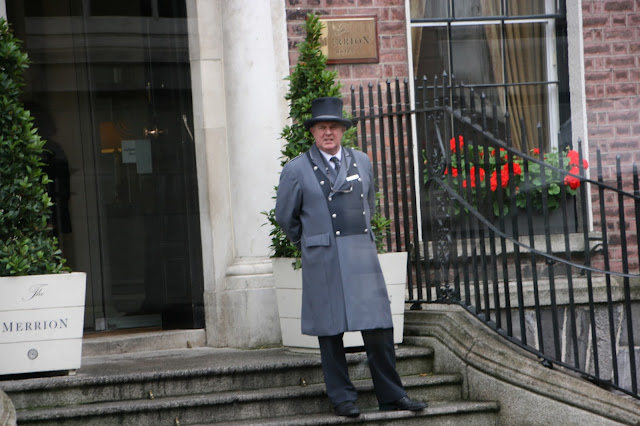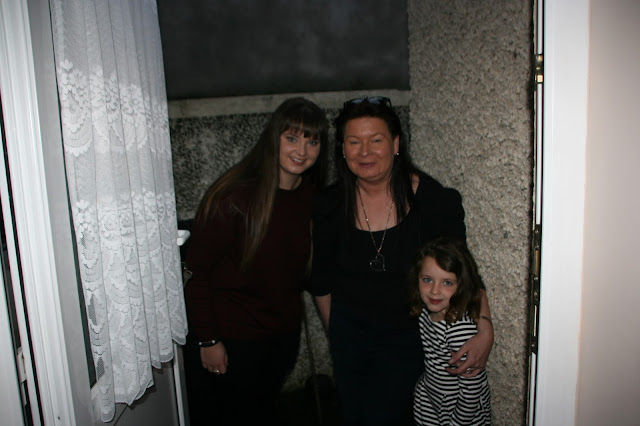We are on our own today. Without Mick to get us going we decide to meet at 9:30. So after another filling and satisfying breakfast at the hotel we head out for the Hop On Hop Off.
The stop is steps away from the hotel.
The plan was to go around and only get off at Kilmainham Jail. However when we got there there was a huge lineup so we opted to stay on board.
Phoenix Park at 707 hectares (1752 acres) is one of the largest enclosed recreational spaces within any European capital city. The Phoenix Park was established in 1662 by one of Ireland’s most illustrious viceroys, James Butler, Duke of Ormond, on behalf of King Charles II.
The Wellington Monument is a 62 metres tall obelisk commemorating the victories of Arthur Wellesley, 1st Duke of Wellington. It is the largest obelisk in Europe and would have been even higher if the publicly subscribed funding had not run out.
The Criminal Courts of Justice (Irish: Na Cúirteanna Breithiúnais Coiriúla) is the principal courts building for the criminal courts in theRepublic of Ireland.It is on Parkgate Street, near the Phoenix Park.
The court building, which officially opened in January 2010, replaced the Four Courts and other buildings as the location for most criminal matters before the Dublin Metropolitan District Court and Dublin Circuit Court. The complex also houses the regular sittings of the Central Criminal Court, Special Criminal Court and is home to the Court of Appeal's criminal division.
In a change from previous older courts buildings in Ireland, the building has facilities to hold up to 100 prisoners in the basement, with separate entrances for each court. Jurors are also based in a separate part of the building with their own court entrances after being empanelled, in order to keep them separate from the public. Victims and victim support organisations also have use of a suite of rooms.
We had visited Jameson last week when we were in Middleton.
James Joyce Bridge (Irish: Droichead James Joyce) is a road bridge spanning the River Liffey, joining the south quays to Blackhall Place on the north side. The bridge is named for the famous Dublin author James Joyce, and was opened on 16 June 2003 (Bloomsday). Joyce's short story "The Dead" is set in Number 15 Usher's Island, the house facing the bridge on the south side.
Going down O'Connell St.
GPO or General Post Office
We get off at O'Connell St. and do some window shopping.
I had read about The Church and had it on my list but never imagined we would trip upon it.
The former St. Mary’s Church of Ireland is one of the earliest examples of a galleried church in Dublin.Built at the beginning of the 18th century, it boasts many outstanding features, such as the Renatus Harris built organ and spectacular stained glass window.St. Mary’s closed in 1964 and lay derelict for a number of years until it was purchased by John Keating in 1997. Following extensive restoration over a seven year period, this List 1 building finally re-opened its doors in December 2005 as John M. Keating’s Bar.In September 2007 the building was acquired by new owners and renamed “The Church Bar and Restaurant”.
A selfie beneath the Spire on O'Connell St.
Some random photos as we drive through the city.
Around some of the Georgian squares.
Doorman at the Merrion Hotel 5 stars.
Dublin is famous for its doors.
Christchurch Cathedral
St. Patrick.
Glasnevin Cemetary
We then visit Croke Park. Croke Park has been at the heart of Irish sporting life for over a hundred years. Boasting a capacity for 82,300 people, the stadium is the home of Gaelic games and the headquarters of the Gaelic Athletic Association (GAA).
The Brazen Head is officially Ireland\'s oldest pub, dating back to 1198. While it is unclear how much of the original 11th century coach house is still intact, there is a palpable sense of history within these timeworn walls.
The pub has managed to retain the charm and characteristics of it\'s past and in particular it\'s patrons, who have included such literaries as James Joyce, Brendan Behan and Jonathan Swift as well as such revolutionaries as Robert Emmet, Wolfe Tone, Daniel O\'Connell and Michael Collins.Today the patrons still include some famous faces, including some very famous musicians like Van Morrison, Hothouse Flowers, Mary Black and Garth Brooks.
Back at the hotel and we get ready to go to my aunt's house.






















































Great scenery of the city! The old church makes for a good restaurant setting particularly.
ReplyDelete